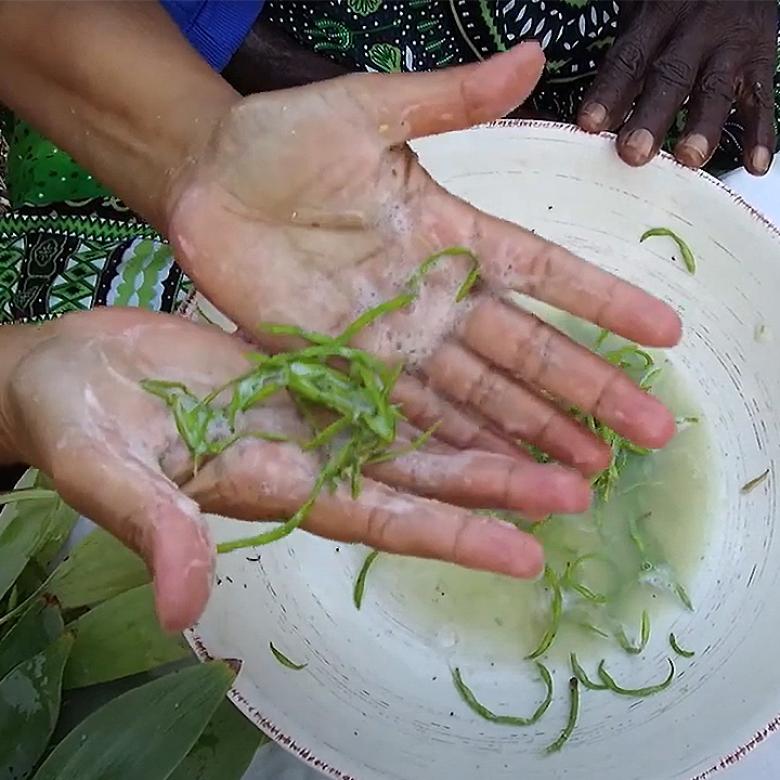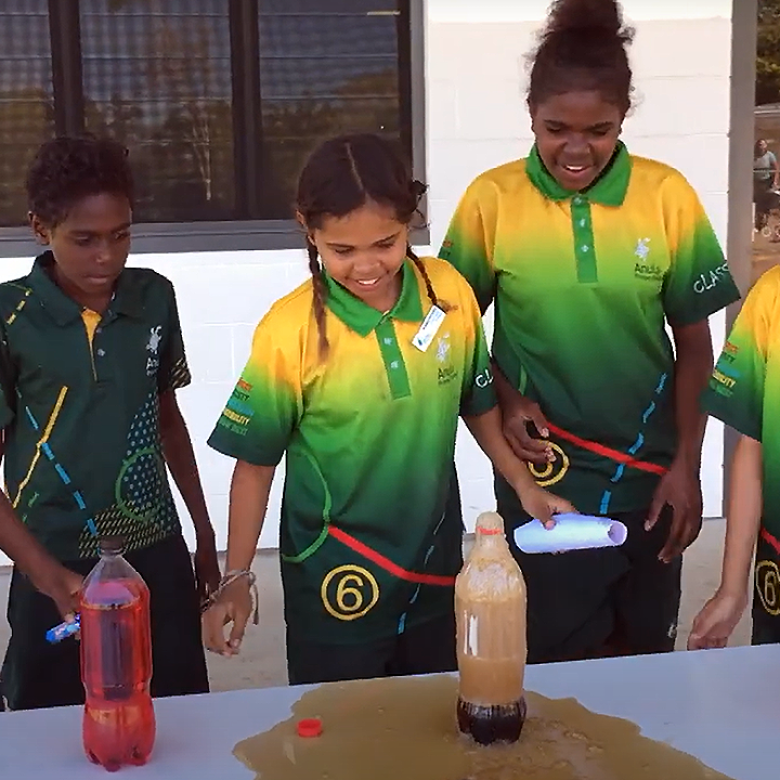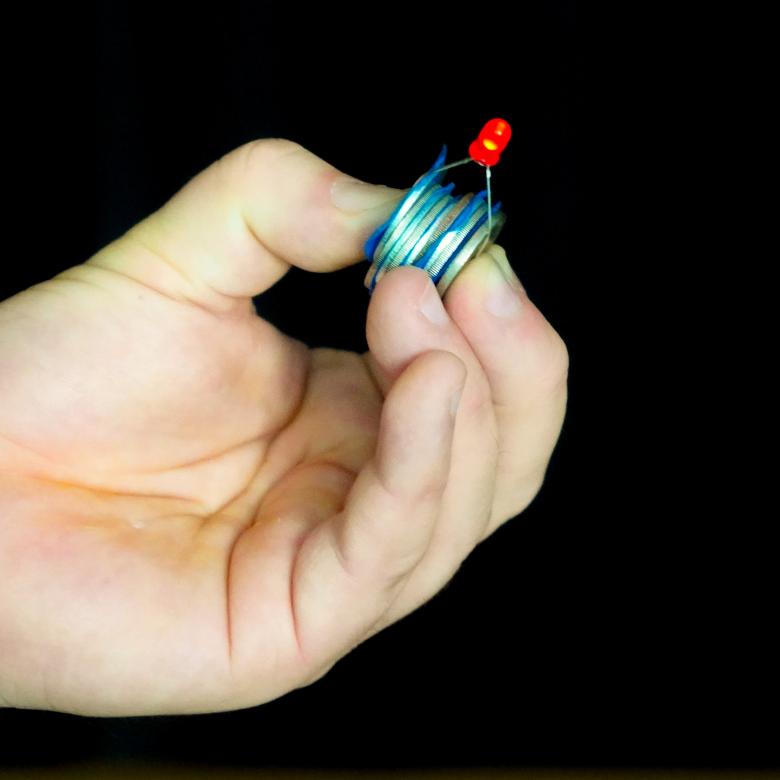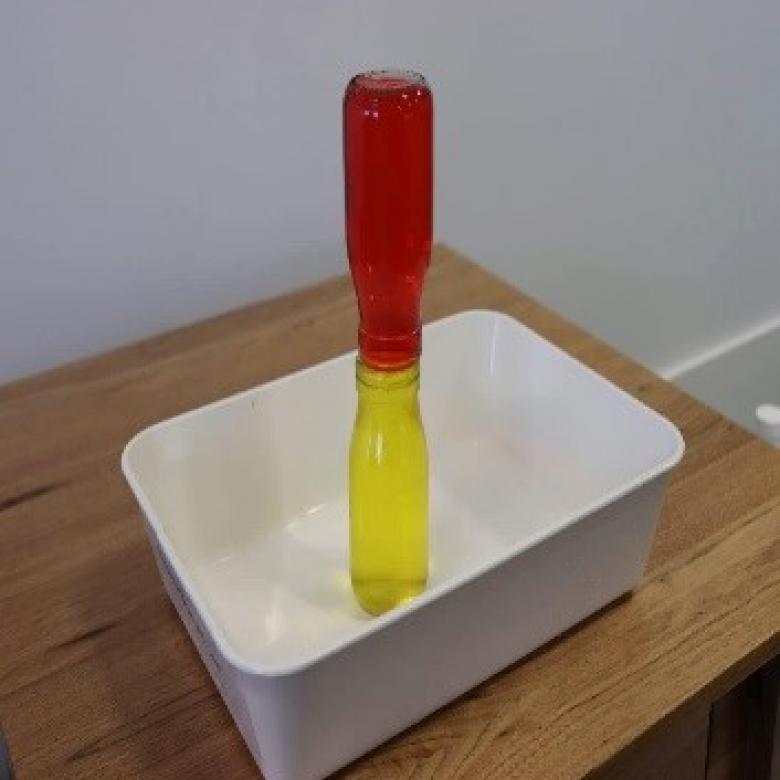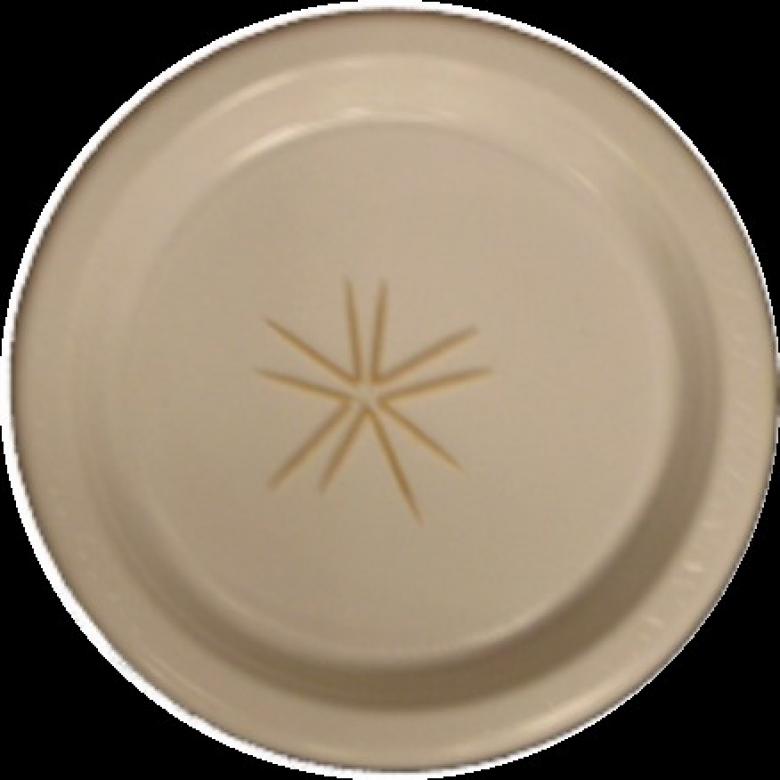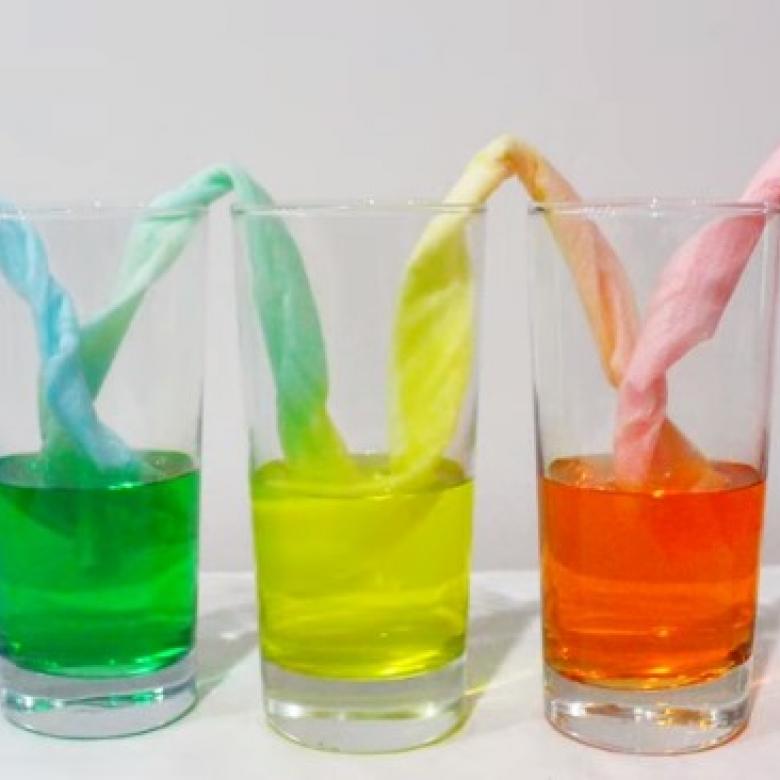You’ll need
- A thermometer
- A large plastic bowl, half-filled with crushed ice
- One and a half cups of table salt (separated into 1-cup and half-cup measurements)
- A large wooden spoon
- One-third of a cup of cream
- 2 teaspoons of sugar
- Half a teaspoon of vanilla essence
- A small metal bowl (or other metal container)
- A small plastic spoon
What to do
- Gather your materials on a flat surface.
- Put the end of the thermometer in the plastic bowl to measure the temperature of the ice. It should be between 0 °C and 5 °C.
- Add 1 cup of salt to the ice and stir well with the wooden spoon. After a few minutes, use the thermometer to measure the temperature of the ice and salt mixture. It should be below 0 °C.
- Place the cream, sugar and vanilla essence into the small metal bowl. Mix with the plastic spoon until the sugar dissolves.
- Place the metal bowl in the ice and salt mixture and push it down so it is surrounded by ice.
- Gently stir the cream mixture with the plastic spoon for about 8 minutes. This may feel like a long time, but don’t stop stirring!
- Remove the metal bowl from the ice bath.
- Add the remaining half-cup of salt to the ice mixture in the plastic bowl and mix using the wooden spoon.
- Return the metal bowl to the ice and salt mixture.
- Continue stirring the cream mixture with the plastic spoon for another 5 to 10 minutes, or until the mixture freezes.
- Eat your ice cream!
Questions to ask
How much colder was the ice mixture after adding the salt? What do you think would happen if you added more salt? Try adding sugar to the ice instead of salt – what happens?
Why is it important to keep stirring the ice cream mixture? What would happen if you just let it sit instead?
Why did you use a metal bowl for the ice cream mixture?
Next time you make your own ice cream, why not try adding your favourite extras? These could be chopped fruit, nuts, chocolate chips or crushed biscuits – be creative!
What's happening
To make ice cream, the ingredients must be at a temperature less than −3 °C and steadily mixed while the ice cream freezes. If the ingredients are mixed together and placed in a freezer, the result would be a hard, icy lump. Stirring the ingredients constantly while the mixture is freezing prevents large, crunchy ice crystals from forming, and also whips air through the mixture to make the ice cream soft and light.
Mixing the ice cream is one thing, but how can we get it below 0 °C without putting it in a freezer? Ice made from pure water has a freezing point of 0 °C, but ice in a mixture of salty water has a lower melting point. The melting point of the salty ice depends on the concentration of salt, but in this activity, it should get well below −3 °C.
How can salt change the freezing point of ice? The bowl of melting ice has water in 2 states: solid and liquid. Where the solid ice meets liquid water, water molecules swap between ice and liquid. Some are released from the ice to join the liquid water, and others are captured from the liquid to join the ice. When the mixture is at 0 °C, the 2 states of water are in equilibrium – this means that the water molecules that are freezing and melting are being exchanged at the same rate. The surrounding temperature in this activity is higher than 0 °C, so the amount of liquid increases as the ice melts – it is an unbalanced equilibrium.
Adding salt to the bowl causes more of the ice to melt and the temperature of the mixture to drop. This is due to freezing point depression.
Normal table salt is the chemical sodium chloride (also written by its chemical formula NaCl). When salt is added to water, it dissolves. Now the water holds sodium ions and chloride ions. The water is no longer pure, and each molecule in the liquid water is less likely to be captured to form ice. The liquid water needs to be at a lower temperature to freeze, hence the name ‘freezing point depression’. The salt isn’t dissolved in the solid water, so the rate of melting doesn’t change. But because the liquid molecules are more likely to stay in the liquid and the ice molecules melt into the liquid and stay there, the unbalanced equilibrium is now even more unbalanced. In the melting process, the ice molecules take up heat from their surroundings, causing the mixture to cool to the freezing point of the saltwater solution.
David: Hi, I'm David from the Questacon Science Squad and today we’re going to be cooking with science because I'm going to show you how to make some really, really cool ice-cream.
(Camera pans to the table)
You need:
- a nice bowl with some ice in the bottom of it
- a thermometer
- some table salt
- thickened cream
- a flavour, we’re going with vanilla
- some sugar
- a nice mixing spoon
- a spoon to pour your salt and your sugar into the ice-cream with and
- another bowl
Now, we’re using a plastic one but use a metal one if you can find them, they work a lot better.
Now, first off, I want you to have a look at your thermometer and have a look at what temperature the ice is.
(Camera zooms into the thermometer in the bowl)
Then grab your little spoon here, and spoon some ice, oooh, some salt on top of the ice there, and give it a good, good mix around so salt gets around everywhere.
(David takes little spoon to sprinkle salt over the ice then stirs it)
Now after you’ve given it a good mix and left it for a few minutes have a look at what temperature your ice is now. It’ll probably be a little bit colder.
(Camera zooms into the thermometer in the bowl)
OK, now we can get down to making our ice-cream. Take out the thermometer, put that to the side.
(David removes thermometer and puts it to the side)
And move your bowl so it’s nice and in the middle of the ice there.
(David puts the bowl into the middle of the ice)
OK, first ingredient, your thickened cream. Pour a nice dollop of that in the bottom that should be plenty.
(David pours cream into the bottom of the bowl)
And your flavour, we’re using vanilla remember? Pour a bit of a splash around there, however much you like.
(David splashes some vanilla into the bowl)
And then, last but not least, especially for the sweet tooths, we have got some very tasty caster sugar. So we’ll go one teaspoon, two teaspoons, three teaspoons that should be plenty.
(David takes the lid off the sugar and puts three teaspoons into the bowl)
Now this is the fun part, you’ve got to mix your ice-cream around, your vanilla essence, and your sugar and your cream for about eight or nine minutes.
(Camera pans to David’s face whilst he begins stirring ice-cream)
Now it won’t be frozen or ready to eat after eight or nine minutes. After that you’ve got to put some more salt on your ice give it a mix it around, then stir it again for another eight or nine minutes and after that it should be ready.
(Camera zooms in on David stirring the ice-cream)
But, I don’t really want to wait that long, so today we’re going to make our ice-cream a little bit differently using stuff you can’t always get at home, liquid nitrogen, this stuff’s great.
(David puts the liquid nitrogen down in front of him)
But I’ve also got to take some special safety precautions so I’m gonna put on my safety goggles and my safety gloves. There’s one hand and two.
(David puts on the glasses and each glove)
Alright so I’ll get rid of that little spoon there and I’ll bring out my big mixing spoon.
(David puts the small spoon to the side and grabs the big spoon)
And pour in the liquid nitrogen. There we go, that should be plenty to start with.
(David pours in some liquid nitrogen)
Give it a bit of a stir; I’ve got to make sure I get all the liquid nitrogen mixed in with my ice-cream. There’s lots and lots of fog.
(David begins stirring the ice-cream)
Now you might be thinking this is pretty dangerous, isn’t it, using liquid nitrogen to make ice-cream? If I eat that I’ll die, but you won’t.
(Camera pans to David)
Because all that liquid nitrogen turns into nitrogen gas and bubbles and boils away and we don’t even taste it at all, it’s not even there when we eat it.
(Camera pans to David still stirring the ice-cream)
Use a little bit more now, pour it in.
(David pours more liquid nitrogen in to the bowl)
There we go mixing it around, nicely, that’s getting nice and cold.
(David stirs the ice-cream more)
Oh look at that, almost finished now
(David lifts the bowl up to the camera to show the ice-cream)
Now a little bit more, once more.
(David pours more liquid nitrogen in to the bowl).
Now liquid nitrogen ice-cream also is some of the creamiest and tastiest ice-cream you’ll ever make. It’s absolutely great.
(David stirs the bowl again)
I think it’s just about ready to taste some now. Still not completely frozen, get a bit from the side maybe.
(David is trying to spoon out some ice-cream from the sides of the bowl)
Oop where are we, there we go. Still not completely frozen but lets have a taste.
(David scoops some ice-cream out and tastes it)
Mmmmm!!! That’s good.
Now if you want to find more about making ice-cream or making liquid nitrogen ice-cream you can head on down to the Questacon Science Squad website. I’ll see you next time.
Did you know
Freezing point depression doesn’t just happen with a solution of salt and water. Other chemicals have the same effect. One is ethylene glycol, which is used as antifreeze in cars to prevent the water in the cooling system from freezing.
In some towns and cities where the winters are very cold, salt is spread over icy roads and footpaths to melt the ice and prevent the water from refreezing.



